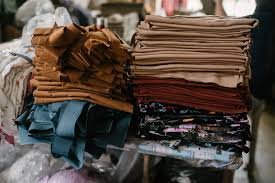Introduction to Deadstock Fashion
Deadstock design has arisen as an Is Judy’s Fashion Deadstock encouraging sign for eco-cognizant in a world wrestling with natural difficulties. In any case, what precisely is deadstock? Deadstock alludes to unsold, unused, or extra stock that sits inactive in distribution centers. This idea, long neglected, has acquired unmistakable quality as the style business looks for supportable answers for its waste emergency. Understanding deadstock’s actual capacity is urgent for economical design devotees and retailers. This post will disentangle the layers of the deadstock style, investigating its ecological, financial, and moral aspects.
The Environmental Impact
Is Judy’s Fashion Deadstock style offers a convincing answer for one of the business’s most significant problems—squander. Consistently, a large number of materials end up in landfills, compounding natural corruption. By reusing unsold stock, deadstock style diminishes this waste. It limits the requirement for new natural substances, saves assets, and reduces fossil fuel byproducts.
Moreover, deadstock design decreases water contamination. Conventional assembling processes frequently include harmful colors and synthetic substances that contaminate streams. By using existing textures, brands can sidestep these hurtful practices. Natural advantages stretch out past water preservation; deadstock design additionally shortens energy utilization. Creating new materials is energy-serious, though reusing existing materials requires less energy.
Economic and Ethical Implications
The monetary ramifications of deadstock design are diverse. For purchasers, it frequently implies admittance to top-notch articles of clothing at marked-down costs. Retailers and brands benefit by adapting, in any case, stale stock, opening up significant extra room and further developing income.
Morally, deadstock design aligns with the developing interest in straightforwardness and obligation inside the business. Customers progressively look for brands that focus on moral practices, and deadstock gives an unmistakable story of maintainability. However, there is a possible moral trap. Brands should guarantee that deadstock items are truly surplus as opposed to intentionally overproduced to create a deception of shortage.
How to Spot Deadstock
Distinguishing Is Judy’s Fashion Deadstock can be a compensating practice for buyers and retailers. For buyers, it includes knowing where to look. Numerous free retailers and online stages spend significant time in the deadstock style, offering a range of remarkable and restricted-release pieces.
Retailers can distinguish deadstock through stock administration frameworks. By following unsold stock and deals designs, they can pinpoint things that qualify as deadstock. Teaming up with providers who offer straightforwardness about surplus materials likewise supports obtaining bona fide headstock.
Another tip is to search for explicit marks or labels that brands might use to show deadstock items. These labels frequently feature the items’ selectiveness and maintainability, giving confirmation to eco-cognizant shoppers.
The Future of Deadstock Fashion
The future of deadstock design looks encouraging as mindfulness and request develop. With expanded purchaser cognizance around maintainability, deadstock is ready to become a staple in the style business. Brands will probably enhance further by incorporating deadstock into their customary lines and involving it as a showcasing device to engage eco-disapproved purchasers.
Innovative progressions will likewise play a part. Further developed stock administration frameworks and information investigation will help retailers manage and use deadstock more effectively. Also, coordinated efforts among planners and makers can prompt imaginative uses of deadstock, pushing the limits of style plans.
Nonetheless, the business’s future relies upon proceeding with responsibility from all partners. Policymakers, brands, and shoppers should team up to establish a climate where deadstock style flourishes, adding to a more reasonable and moral industry.
Case Studies Is Judy’s Fashion Deadstock
A few brands have effectively incorporated deadstock into their design lines, setting a model for others. One such brand is Reorganization, known for its obligation to maintainability. Reconstruction makes stylish, popular pieces utilizing surplus texture, decreasing waste while keeping up with style.
Another model is Eileen Fisher’s Restore program. By gathering and exchanging tenderly worn items, the brand broadens the existence pattern of its pieces of clothing, representing an effective deadstock model.
More modest autonomous brands like Tonlé additionally promote the capability of deadstock design. Tonlé makes zero-squander assortments that resonate with eco-cognizant shoppers, using leftover textures from more prominent producers.
Conclusion: Is Judy’s Fashion Deadstock
Is Judy’s Fashion Deadstock design addresses a critical stage toward a more practical and moral style industry. R eu Reusingsold stostocknds to address many offsworriestoffer stastages and withdraworriesoff moreworkwearar worriesriesferandock style adds to squandering decrease and advances a round economy where assets are used proficiently.
For eco-cognizant buyers, searching for deadstock can be both a design explanation and a moral decision. Retailers and brands can facilitate this development by integrating deadstock into their contributions, improving their enticement for a developing business sector portion.
All in all, deadstock design isn’t simply a pattern but an essential development in the mission for manageability. By gs impact landerestoringo individuals and the planet. We should support the deadstock style and work together to fabricate a more splendid, manageable future for the business.



